Creating a zen bedroom transforms your sleeping space into a sanctuary of peace and tranquility. Rooted in Buddhist principles of mindfulness and simplicity, zen bedroom design emphasizes minimalism, natural elements, and harmonious balance. These carefully curated ideas will help you design a serene retreat that promotes restful sleep, reduces stress, and fosters inner calm. From natural color palettes to mindful storage solutions, each element works together to create an atmosphere of purposeful simplicity and restorative beauty.
1. Zen Bedroom Minimalist Design Foundation

A minimalist approach forms the cornerstone of authentic zen bedroom design, emphasizing only essential furniture and decor elements. Choose streamlined pieces with clean lines, such as a low-profile platform bed, simple nightstands, and a dresser with handleless drawers. Avoid overwhelming the space with excessive decorative items or furniture that serves no clear purpose. The goal is creating an open, airy atmosphere that promotes mental clarity and peaceful rest. This foundational principle ensures your zen bedroom remains uncluttered and conducive to relaxation, allowing the mind to settle naturally into a state of calm when entering the space.
2. Zen Bedroom Natural Color Palette
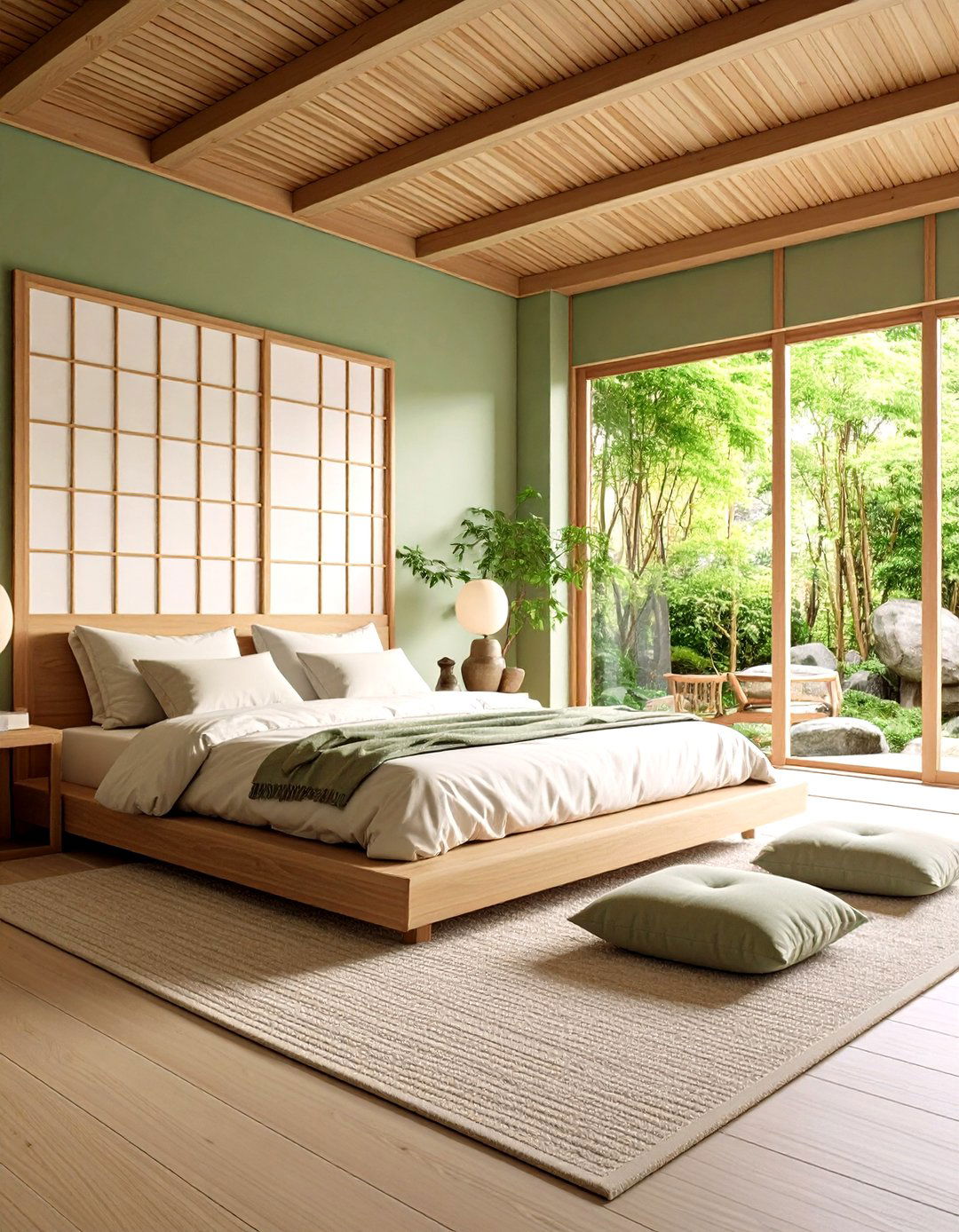
Establish tranquility through a carefully selected zen bedroom color scheme featuring warm neutrals, soft earth tones, and nature-inspired hues. Opt for colors like warm white, soft beige, gentle taupe, sage green, and muted blues that evoke natural environments and promote relaxation. These soothing shades create visual harmony while reducing stimulation that might interfere with sleep. Consider using different tones of the same color family to add subtle depth without disrupting the peaceful atmosphere. The right color palette serves as the foundation for your zen bedroom, setting a serene mood that supports both physical rest and mental tranquility throughout the space.
3. Zen Bedroom Natural Materials Integration
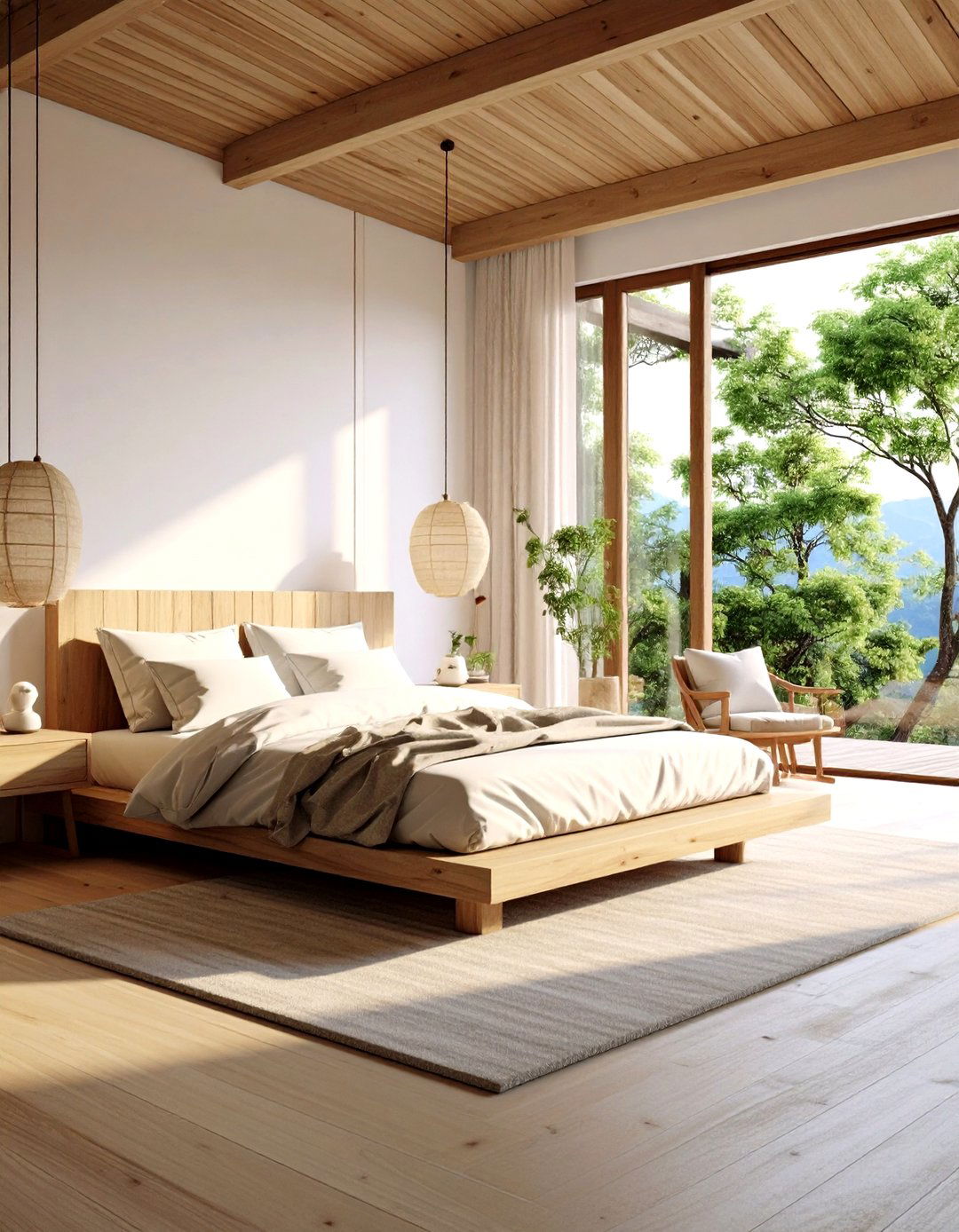
Incorporate organic materials like solid wood, bamboo, linen, cotton, and stone to create an authentic zen bedroom atmosphere that connects you with nature. Choose furniture crafted from light woods such as maple, beech, or oak, which bring warmth and natural beauty to the space. Natural fiber textiles like organic cotton bedding, linen curtains, and wool rugs add tactile comfort while maintaining the zen aesthetic. These materials not only look beautiful but also contribute to better air quality and a healthier sleeping environment. The use of natural materials reinforces the zen philosophy of living in harmony with nature and creates a grounding presence.
4. Zen Bedroom Greenery and Plants
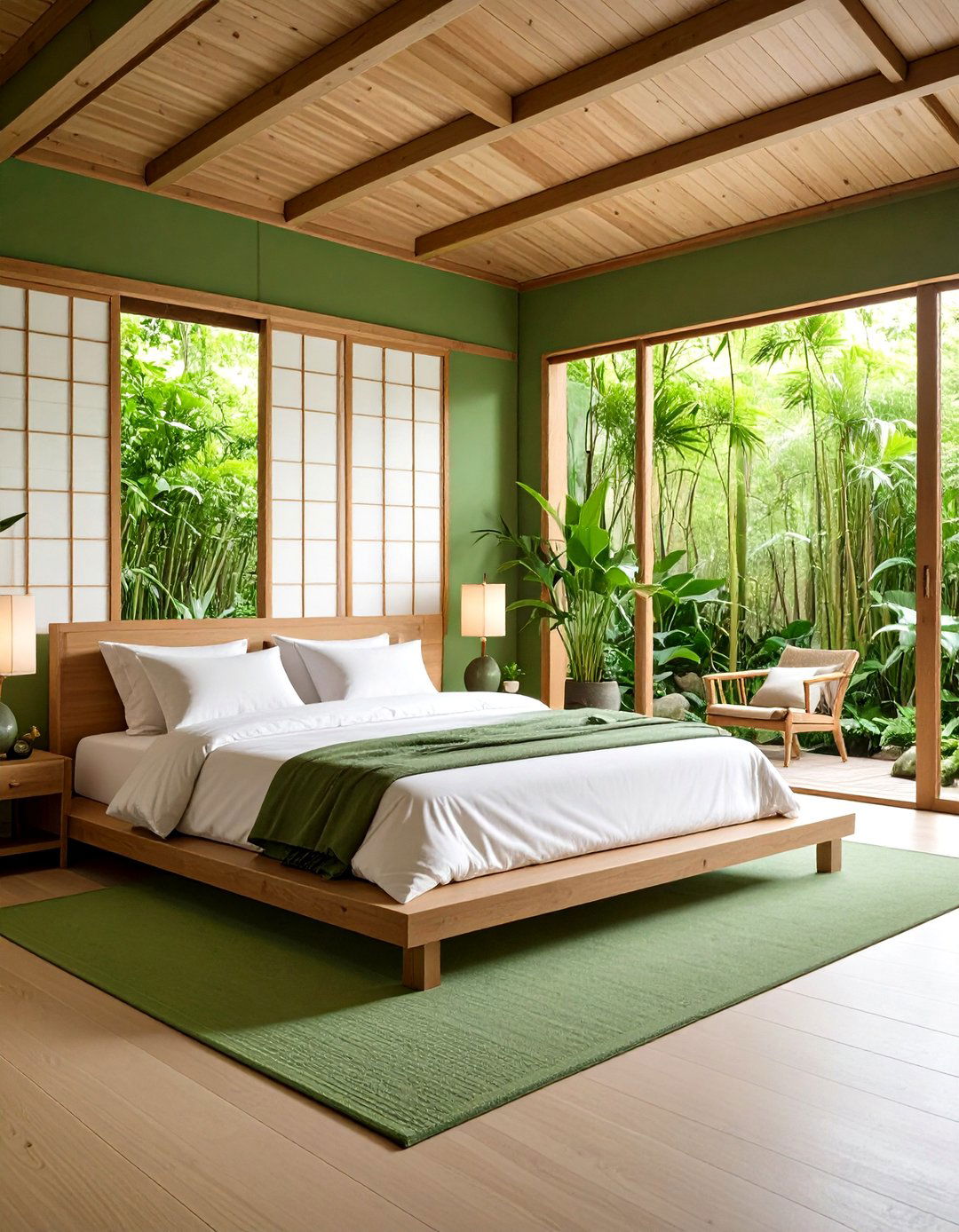
Introduce carefully selected plants to your zen bedroom to purify the air and strengthen the connection with nature essential to zen design. Choose low-maintenance options like snake plants, peace lilies, or bamboo palms that thrive in bedroom conditions while requiring minimal care. Position plants strategically near windows or in corners where they can flourish without cluttering the space. Small potted herbs like lavender can provide natural aromatherapy benefits. The presence of living greenery adds organic color and life to your zen bedroom while supporting the principle of bringing natural elements indoors for enhanced well-being and tranquility.
5. Zen Bedroom Natural Lighting Optimization
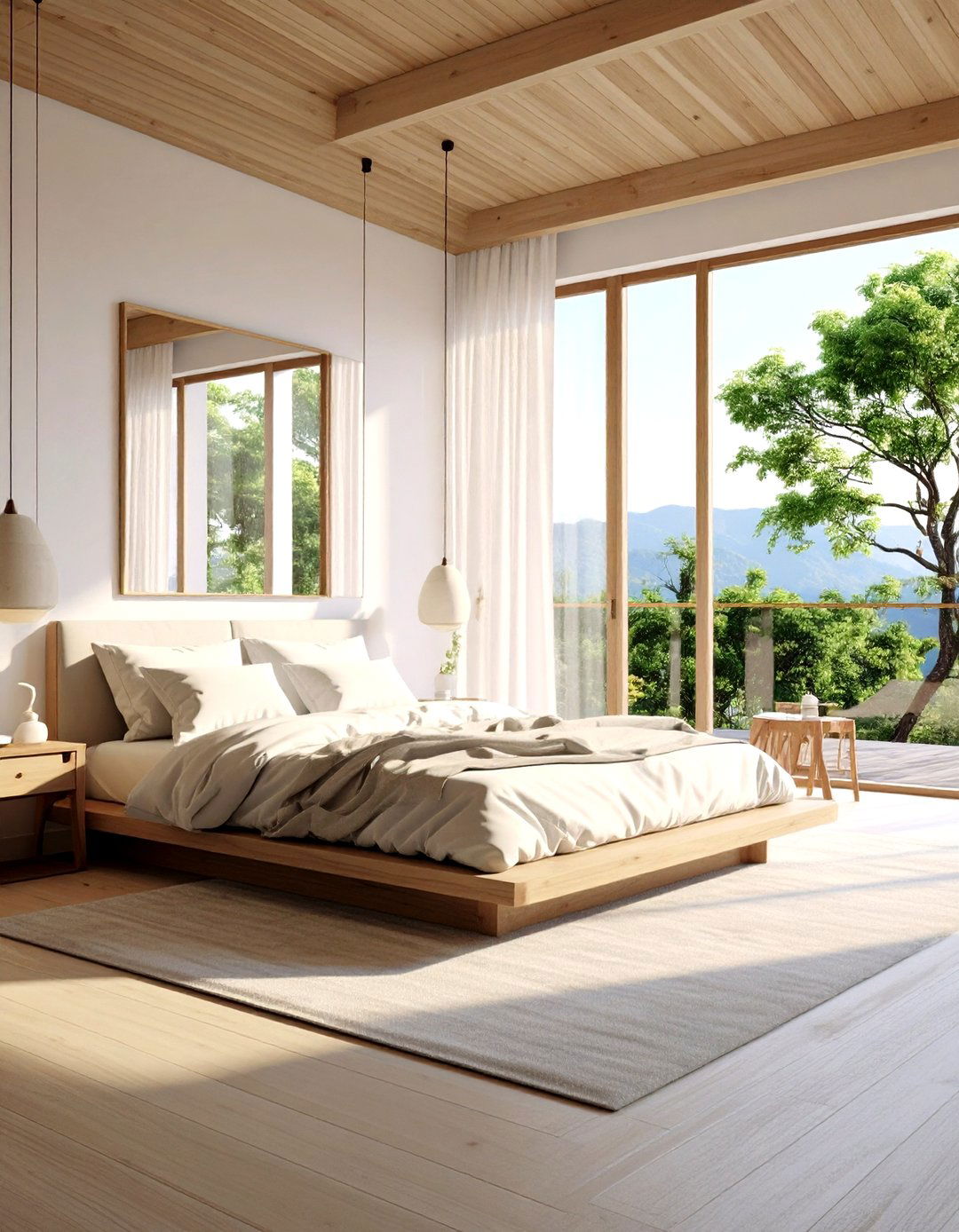
Maximize natural light in your zen bedroom through strategic window treatments and placement of reflective surfaces that enhance the connection with outdoor rhythms. Install sheer curtains or light-colored window coverings that filter harsh sunlight while preserving brightness throughout the day. Position mirrors thoughtfully to reflect natural light into darker corners without creating visual clutter. Choose east or west-facing windows when possible to enjoy gentle sunrise or sunset views. Natural light regulates circadian rhythms and creates an uplifting atmosphere that supports the zen principle of living in harmony with natural cycles, promoting better sleep quality and overall well-being.
6. Zen Bedroom Clutter-Free Organization
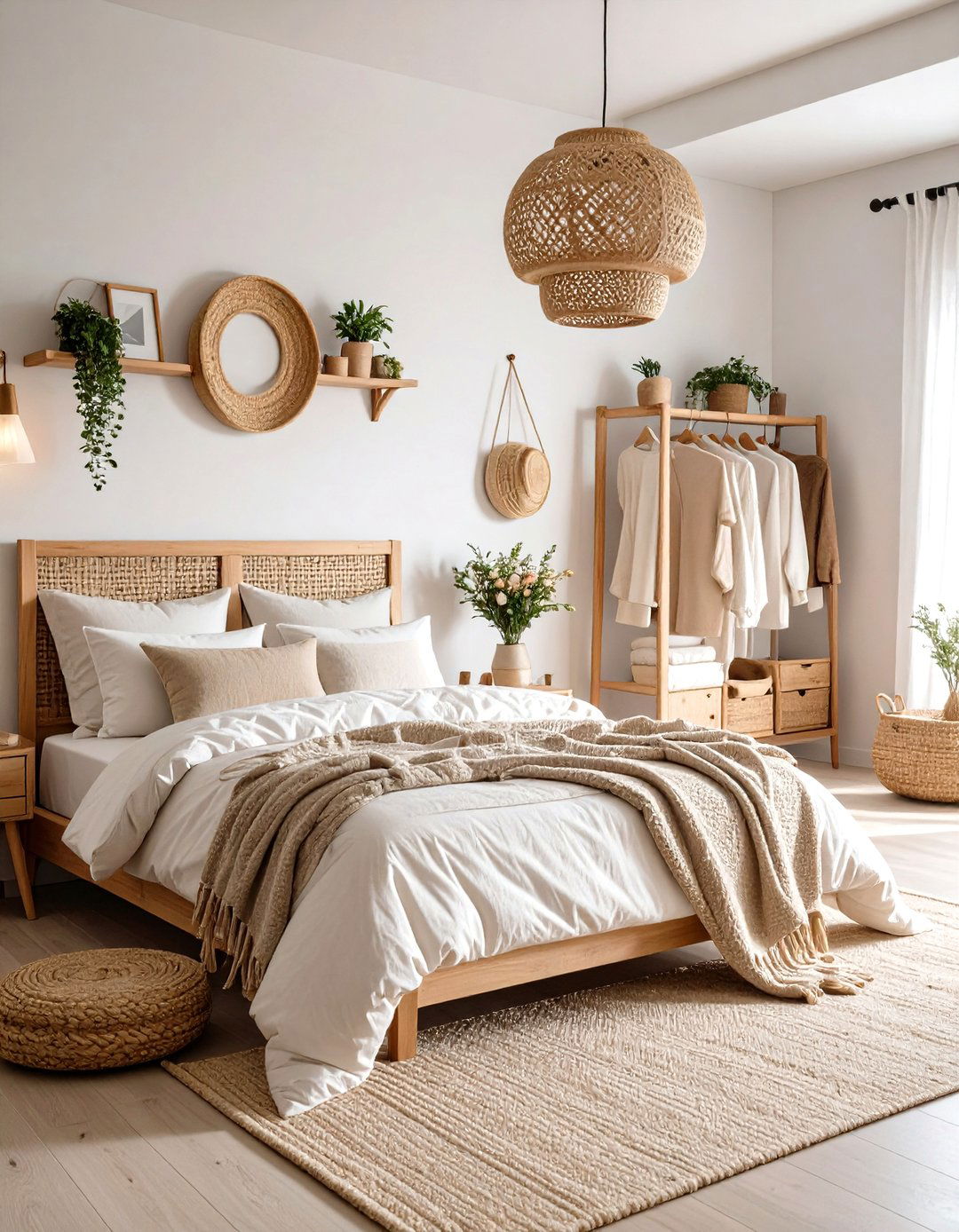
Achieve the zen bedroom ideal of visual and mental clarity by implementing systematic organization strategies that keep all surfaces completely clear and unencumbered. Store books, electronics, and personal items in closed storage solutions rather than leaving them visible on nightstands or dressers. Establish designated homes for every item and maintain regular tidying routines to prevent accumulation of clutter. This practice reflects the zen principle that external order supports internal peace. A clutter-free environment eliminates distractions that can prevent the mind from settling into relaxation, creating the mental space necessary for restorative sleep and mindful living within your zen bedroom sanctuary.
7. Zen Bedroom Low-Profile Platform Bed
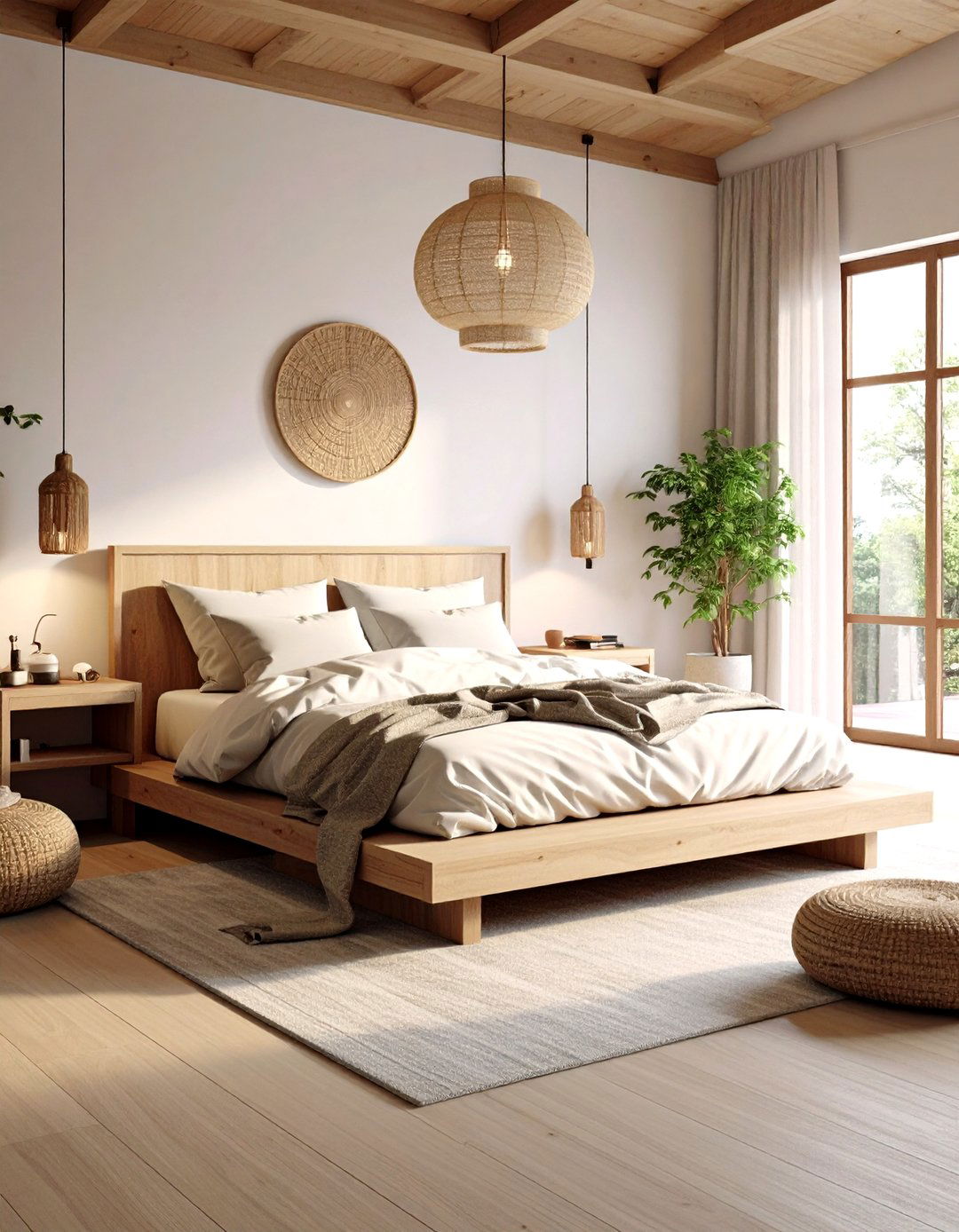
Select a low-profile platform bed or floor-level sleeping arrangement that embodies the zen bedroom principle of groundedness and connection to earth elements. Platform beds with built-in storage drawers maximize functionality while maintaining clean lines essential to zen aesthetics. Consider Japanese-inspired futon arrangements on tatami mats for an authentic touch. The low height creates a sense of stability and humility while making the room appear more spacious. This furniture choice reflects zen values of simplicity and mindfulness, encouraging a closer relationship with the ground and promoting feelings of security and calm that support deep, restorative sleep in your zen bedroom.
8. Zen Bedroom Meditation Corner Creation
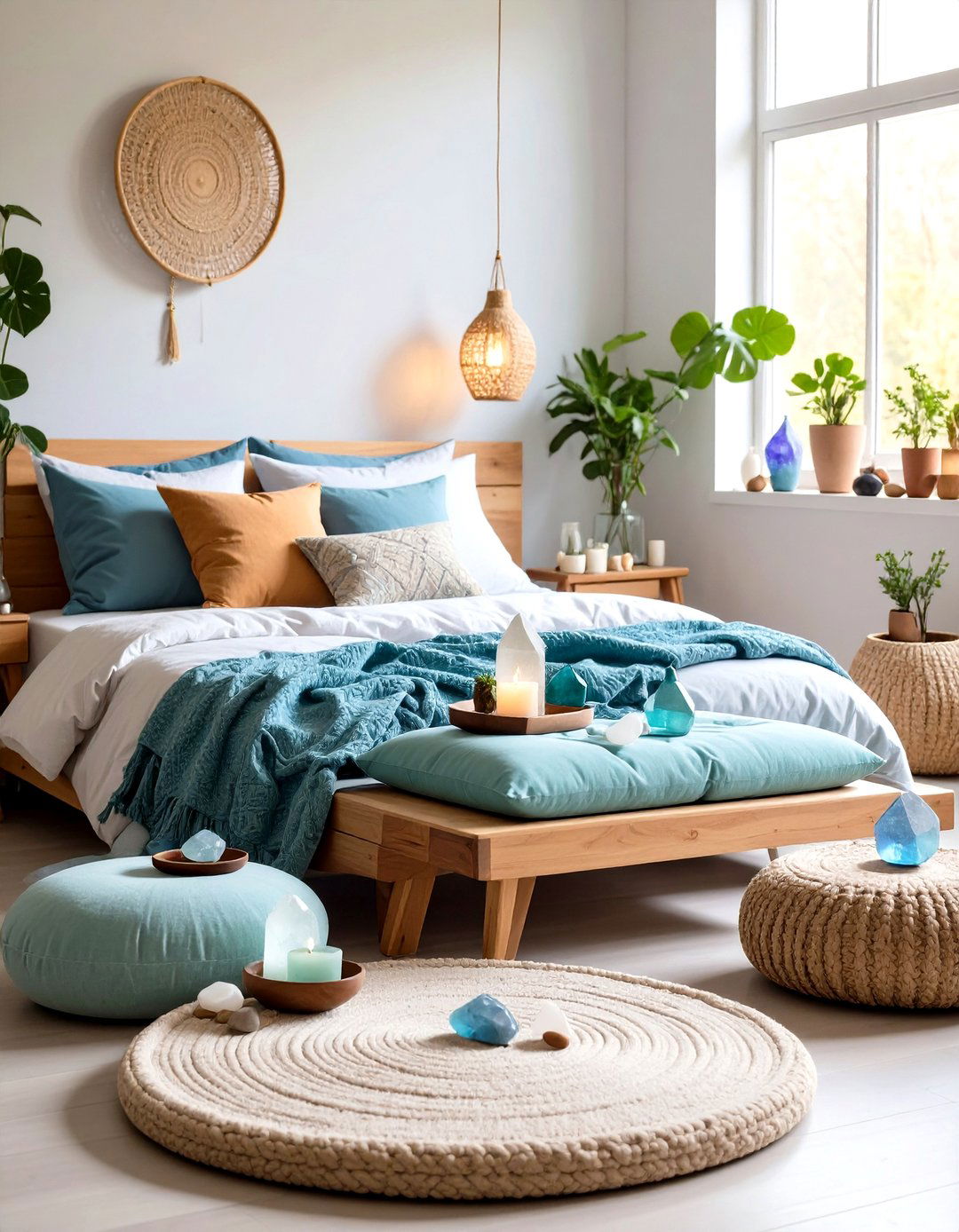
Designate a peaceful meditation corner within your zen bedroom to support daily mindfulness practices and spiritual reflection. Choose a quiet area near a window with natural light, furnished simply with a comfortable meditation cushion, small side table, and perhaps a few meaningful objects like crystals or incense holders. Keep this space separate from sleep and work activities to maintain its sacred purpose. Install soft lighting options like a salt lamp or candles for evening practice. This dedicated corner reinforces the zen bedroom's role as a sanctuary for both physical rest and spiritual renewal, providing a consistent space for contemplation.
9. Zen Bedroom Soft Ambient Lighting
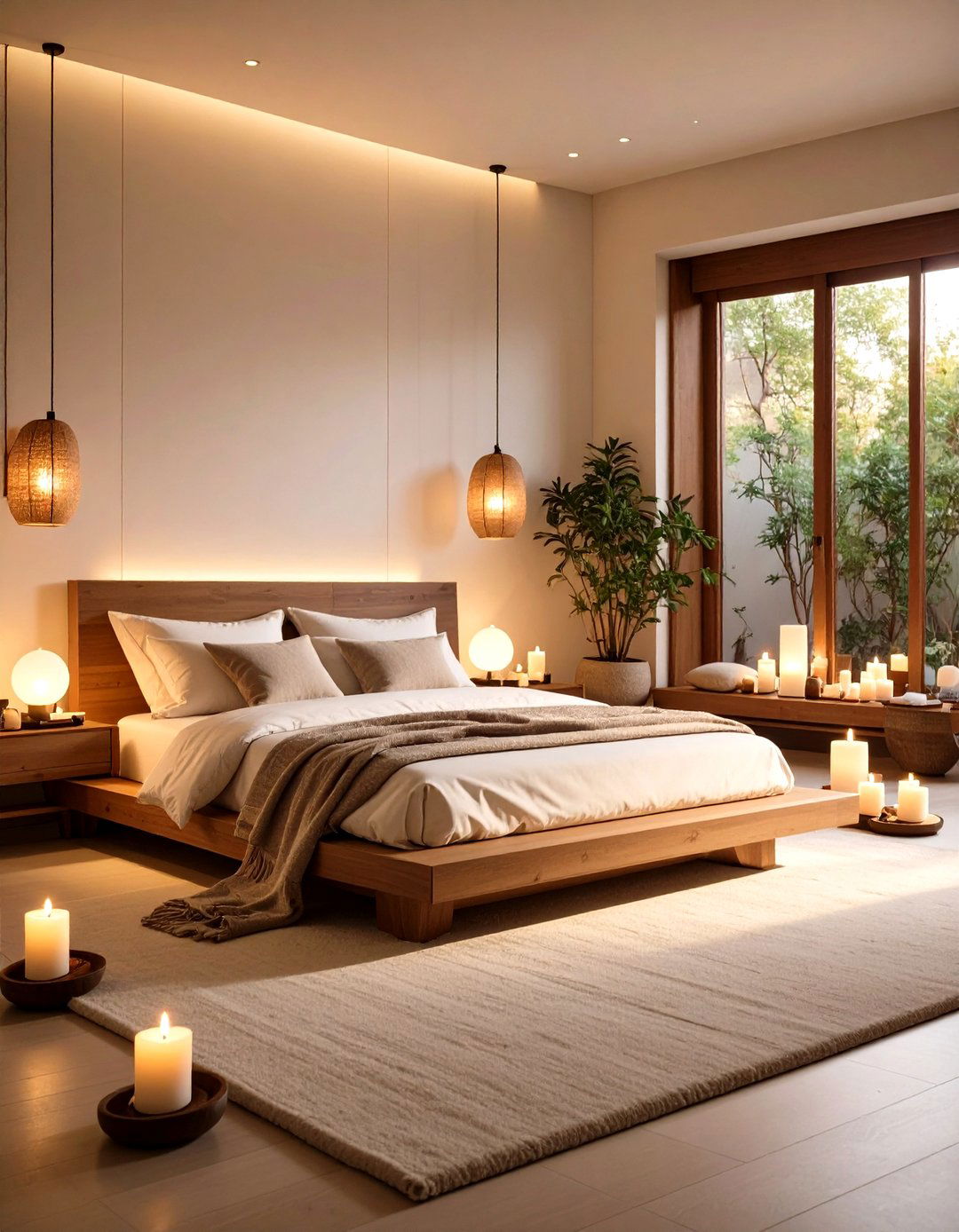
Layer gentle, warm lighting throughout your zen bedroom using dimmable fixtures, salt lamps, and candles that create a soothing atmosphere conducive to relaxation. Install bedside sconces with warm white LED bulbs (2700-3000K) and avoid harsh overhead lighting that can disrupt the peaceful mood. Consider pendant lights with natural materials like bamboo or rattan shades. Battery-operated candles provide safe ambiance without fire risk. The goal is creating pools of soft light that eliminate harsh shadows while supporting the zen principle of gentle living. Proper lighting helps regulate circadian rhythms and signals to the body that it's time to unwind.
10. Zen Bedroom Natural Texture Layering
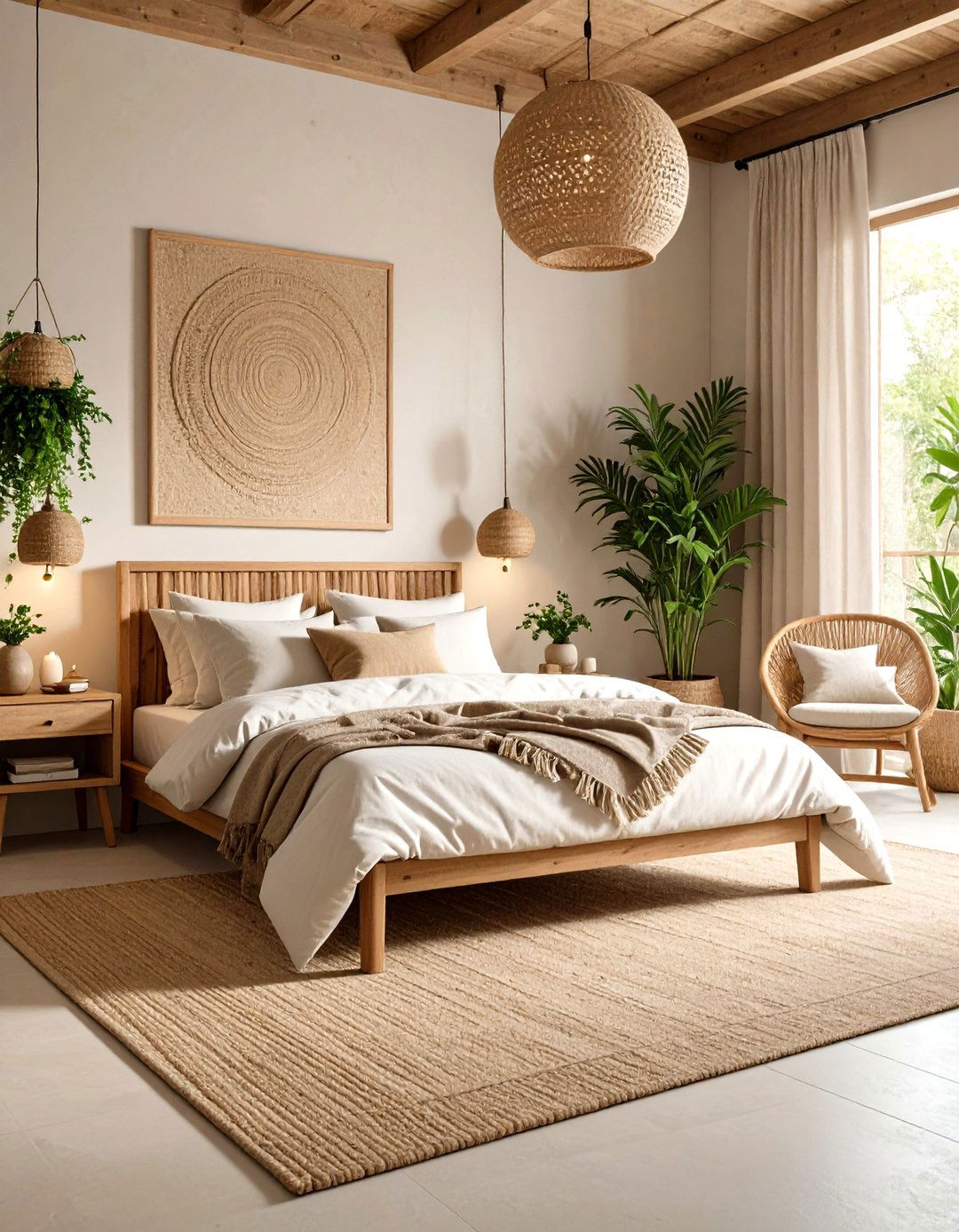
Create visual and tactile interest in your zen bedroom through thoughtful layering of natural textures like linen, wool, cotton, and jute without overwhelming the minimalist aesthetic. Combine different fabric weights and weaves in bedding, such as pairing smooth cotton sheets with a chunky knit throw blanket. Add a natural fiber rug beneath the bed for warmth and softness underfoot. Incorporate textured elements like a woven wall hanging or macrame plant holder sparingly. These layers add depth and comfort while maintaining the zen principle of using materials that connect us to nature and enhance the sensory experience of the space.
11. Zen Bedroom Technology-Free Environment

Transform your zen bedroom into a true digital sanctuary by removing all electronic devices and screens that can disrupt sleep quality and mental peace. Store smartphones, tablets, televisions, and laptops outside the bedroom to eliminate blue light exposure and electromagnetic field concerns. Replace digital alarm clocks with analog versions and use blackout curtains instead of electronic light-blocking devices. This practice supports the zen principle of present-moment awareness and reduces the stimulation that prevents deep relaxation. A technology-free zen bedroom creates space for natural sleep cycles, better rest quality, and enhanced connection with inner stillness and tranquility.
12. Zen Bedroom Quality Natural Bedding
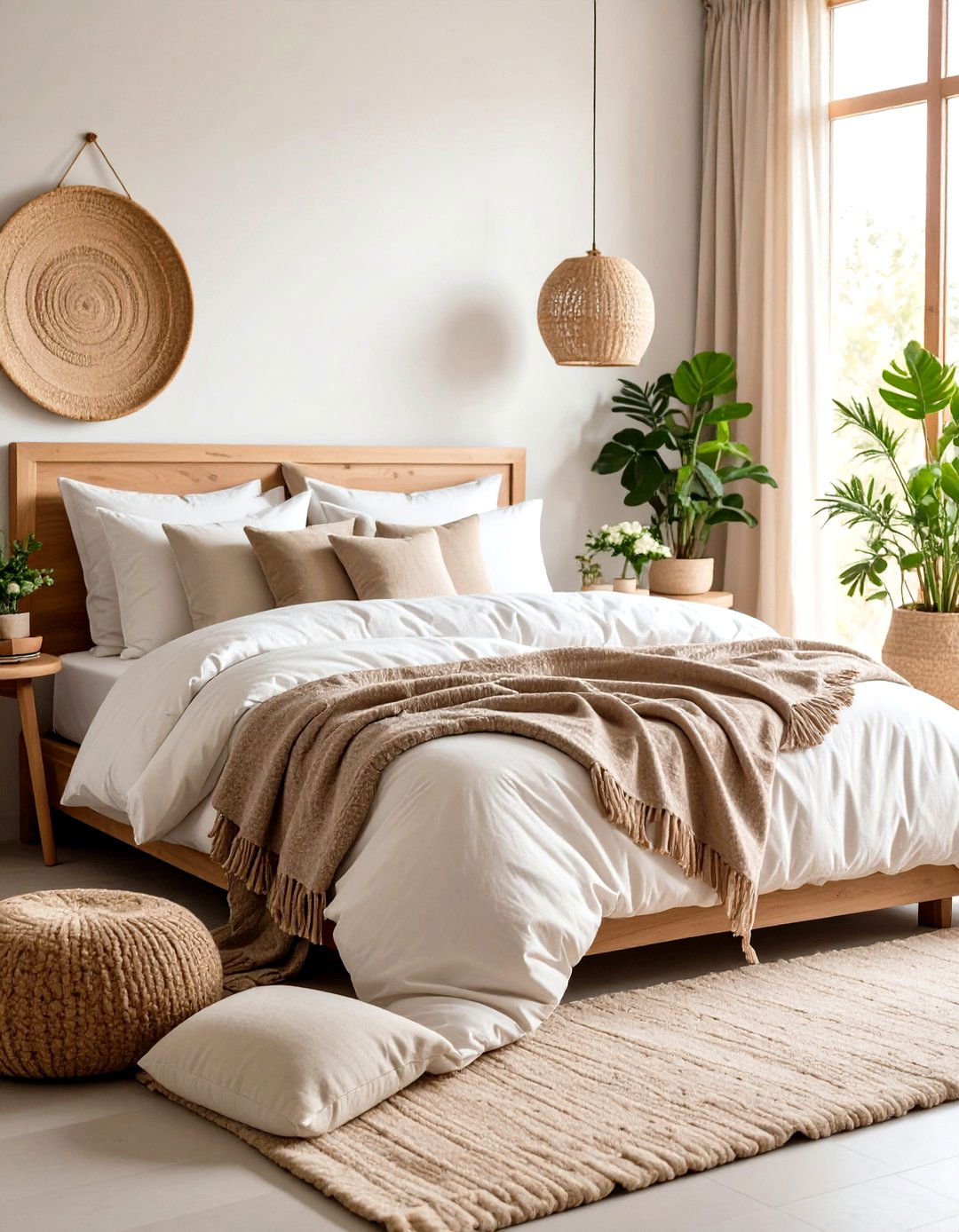
Invest in high-quality, natural fiber bedding that supports both comfort and the zen bedroom philosophy of living in harmony with nature. Choose organic cotton, linen, or bamboo sheets that breathe well and regulate temperature naturally. Select pillows filled with natural materials like organic cotton or kapok rather than synthetic alternatives. Layer bedding thoughtfully with a lightweight coverlet, organic wool blanket, and natural cotton duvet cover in neutral tones. Quality natural bedding not only feels luxurious but also supports better sleep by allowing proper air circulation and temperature regulation while aligning with zen values of simplicity and natural living.
13. Zen Bedroom Feng Shui Principles
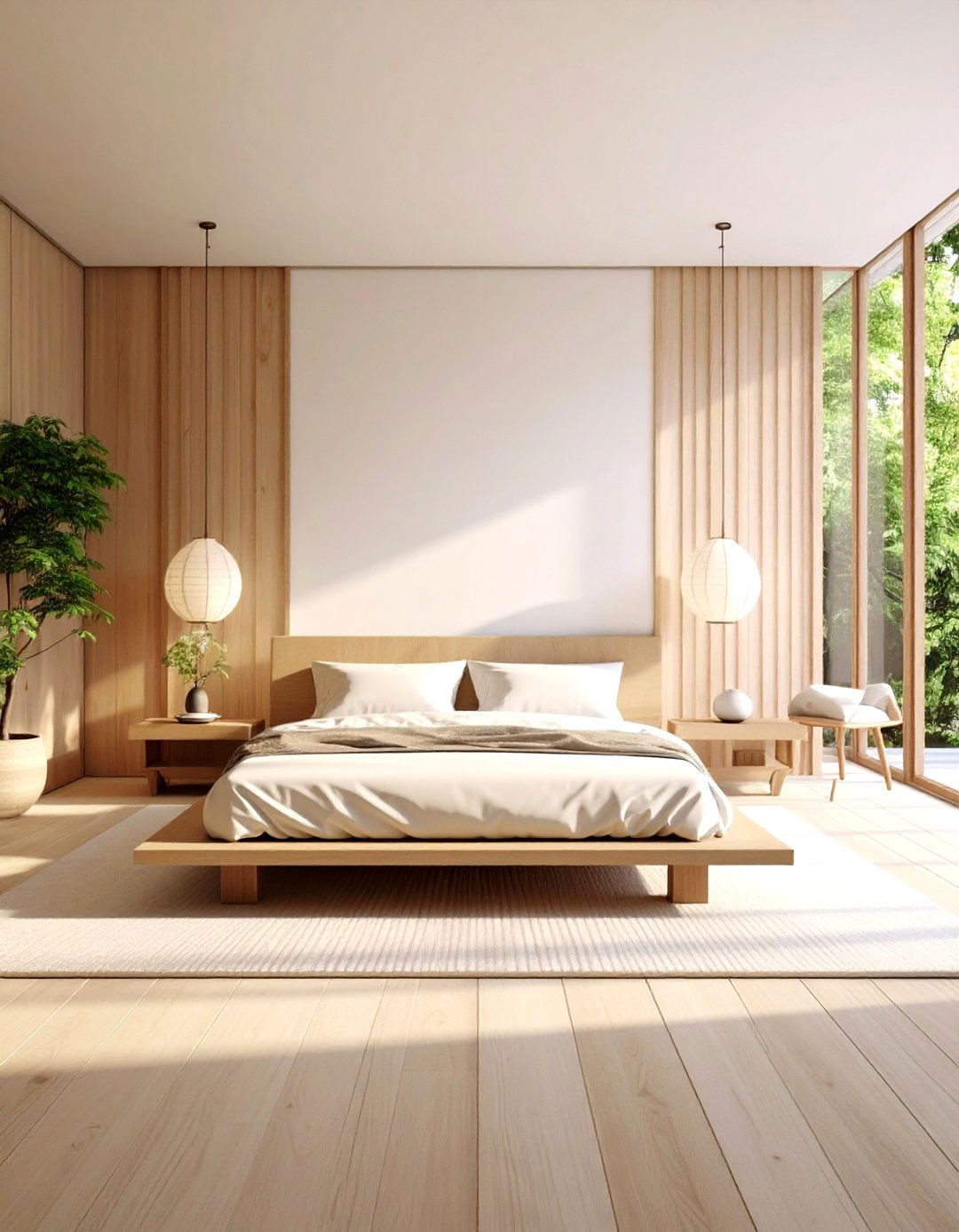
Apply fundamental feng shui concepts to your zen bedroom layout to optimize energy flow and create balance that supports restful sleep and well-being. Position the bed against a solid wall with a clear view of the door while avoiding direct alignment with the doorway. Ensure adequate space on both sides of the bed for balanced energy and easy movement. Remove or minimize mirrors facing the bed, which can create restless energy. Incorporate the five elements—wood, fire, earth, metal, and water—through thoughtful material choices and colors. These ancient principles complement zen philosophy by creating harmony between the individual and their environment for optimal rest and rejuvenation.
14. Zen Bedroom Aromatherapy Integration

Enhance your zen bedroom atmosphere through natural aromatherapy using essential oils, incense, or dried herbs that promote relaxation and support healthy sleep cycles. Choose calming scents like lavender, sandalwood, cedarwood, or eucalyptus through reed diffusers, essential oil diffusers, or naturally scented candles. Avoid synthetic fragrances that can cause sensitivities or disrupt sleep quality. Consider growing aromatic herbs like lavender or mint on a sunny windowsill for natural fragrance. Gentle, natural scents support the zen principle of engaging all senses mindfully while creating positive associations with your sleeping space that encourage deeper relaxation and more restorative rest.
15. Zen Bedroom Wooden Accent Features

Incorporate warm wooden elements throughout your zen bedroom to strengthen the connection with nature and add organic beauty that embodies zen principles. Consider slatted wood accent walls, floating wooden shelves, or a reclaimed wood headboard that serves as a natural focal point. Choose light wood tones like oak, maple, or bamboo that complement the peaceful color palette. Wooden furniture pieces should feature clean lines and minimal ornamentation to maintain the zen aesthetic. These natural elements bring life and warmth to the space while supporting the zen philosophy of finding beauty in natural materials and simple forms that connect us to the earth.
16. Zen Bedroom Hidden Storage Solutions
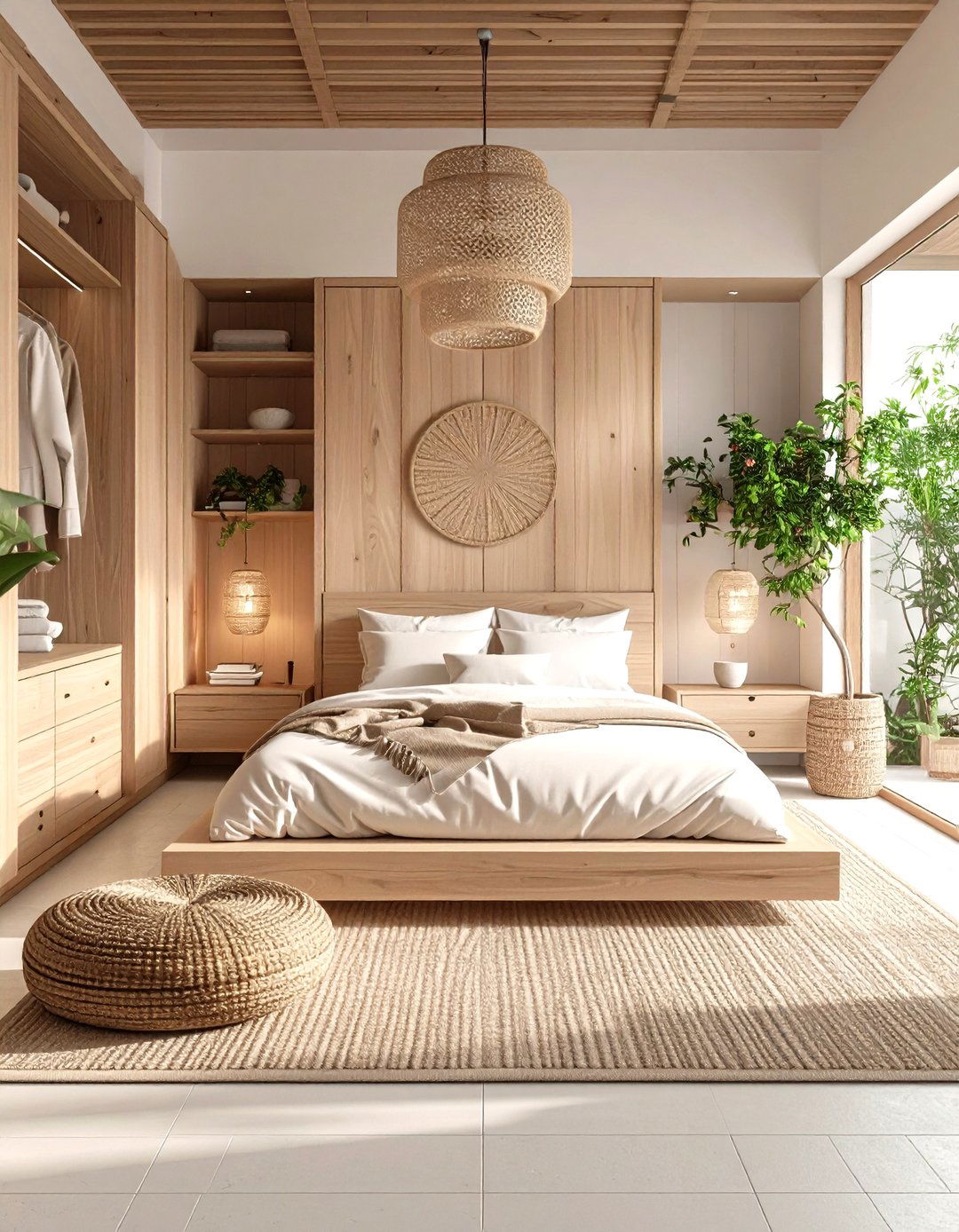
Implement clever storage solutions that maintain the clean, uncluttered appearance essential to zen bedroom design while providing practical organization for belongings. Choose beds with built-in drawers, floating nightstands with hidden compartments, or wall-mounted storage that doesn't interrupt floor space. Install customized built-in wardrobes with clean, handleless doors that blend seamlessly with the wall design. Use storage ottomans or benches that serve dual purposes while hiding seasonal items or extra linens. These solutions support the zen principle of intentional living by ensuring every item has a designated place while maintaining the visual simplicity crucial for mental clarity and peaceful rest.
17. Zen Bedroom Monochromatic Design Approach
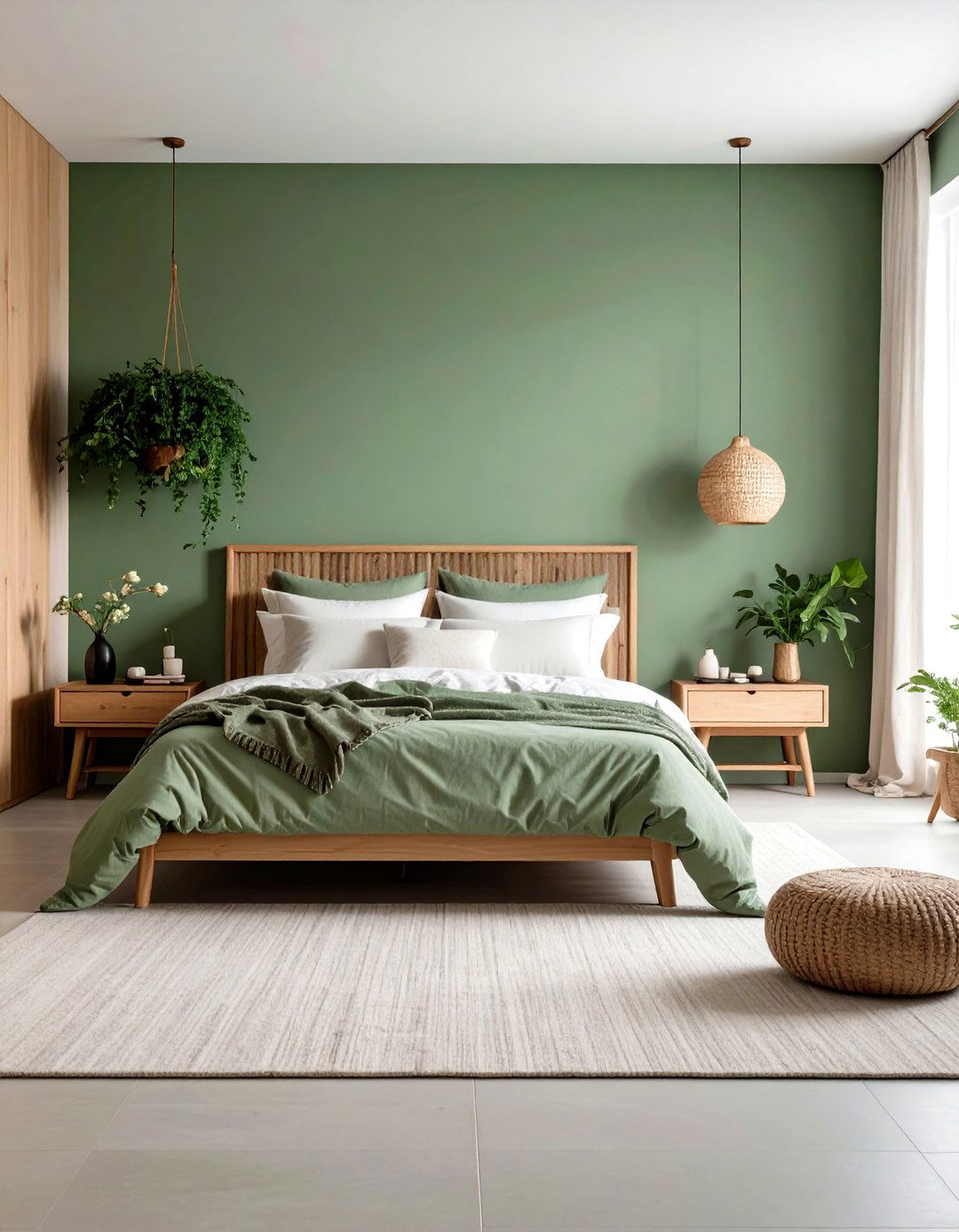
Create visual harmony in your zen bedroom through a sophisticated monochromatic color scheme that uses varying shades and tones of a single color family. For example, layer different shades of sage green through wall paint, bedding, textiles, and accessories to create depth without visual disruption. This approach simplifies decision-making while creating a cohesive, calming environment that supports the zen principle of unity and balance. Add interest through texture variations rather than color contrasts, using materials like matte paint, linen fabrics, and natural wood finishes. The monochromatic approach reduces visual stimulation and creates the serene backdrop necessary for deep relaxation and restorative sleep.
18. Zen Bedroom Built-In Seating Area
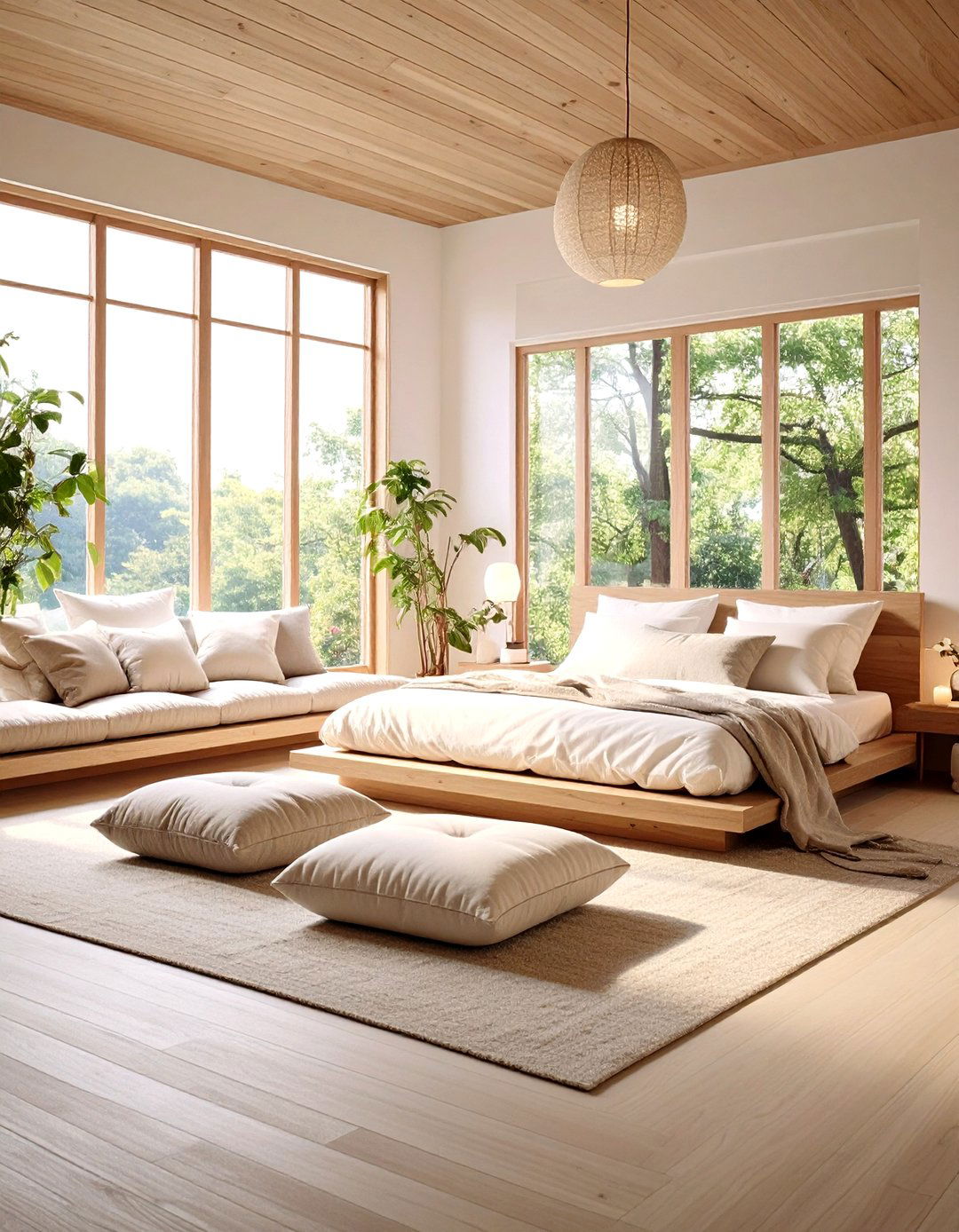
Design a built-in seating nook within your zen bedroom that provides a dedicated space for quiet reflection, reading, or gentle morning routines. Create a window seat with storage beneath using natural materials and soft cushions in neutral tones that complement the overall zen aesthetic. Alternatively, build a low platform seating area with floor cushions for meditation or gentle stretching. This feature adds functionality without cluttering the space and supports the zen principle of creating purposeful areas for different activities within the bedroom. The built-in approach maintains clean lines while providing a comfortable spot for contemplative moments that enhance the room's role as a peaceful sanctuary.
19. Zen Bedroom Natural Sound Elements

Introduce gentle natural sounds to your zen bedroom through small water features, wind chimes, or sound machines that mask urban noise and promote relaxation. A small tabletop fountain creates soothing water sounds while adding humidity to the air and serving as a beautiful natural element. Choose wind chimes with soft, melodic tones placed near an open window to catch gentle breezes. Sound machines featuring natural recordings of rain, ocean waves, or forest sounds can mask disruptive noises while supporting the zen connection to nature. These audio elements should be subtle and peaceful, supporting rather than overwhelming the tranquil atmosphere essential to zen bedroom design.
20. Zen Bedroom Seasonal Natural Decoration
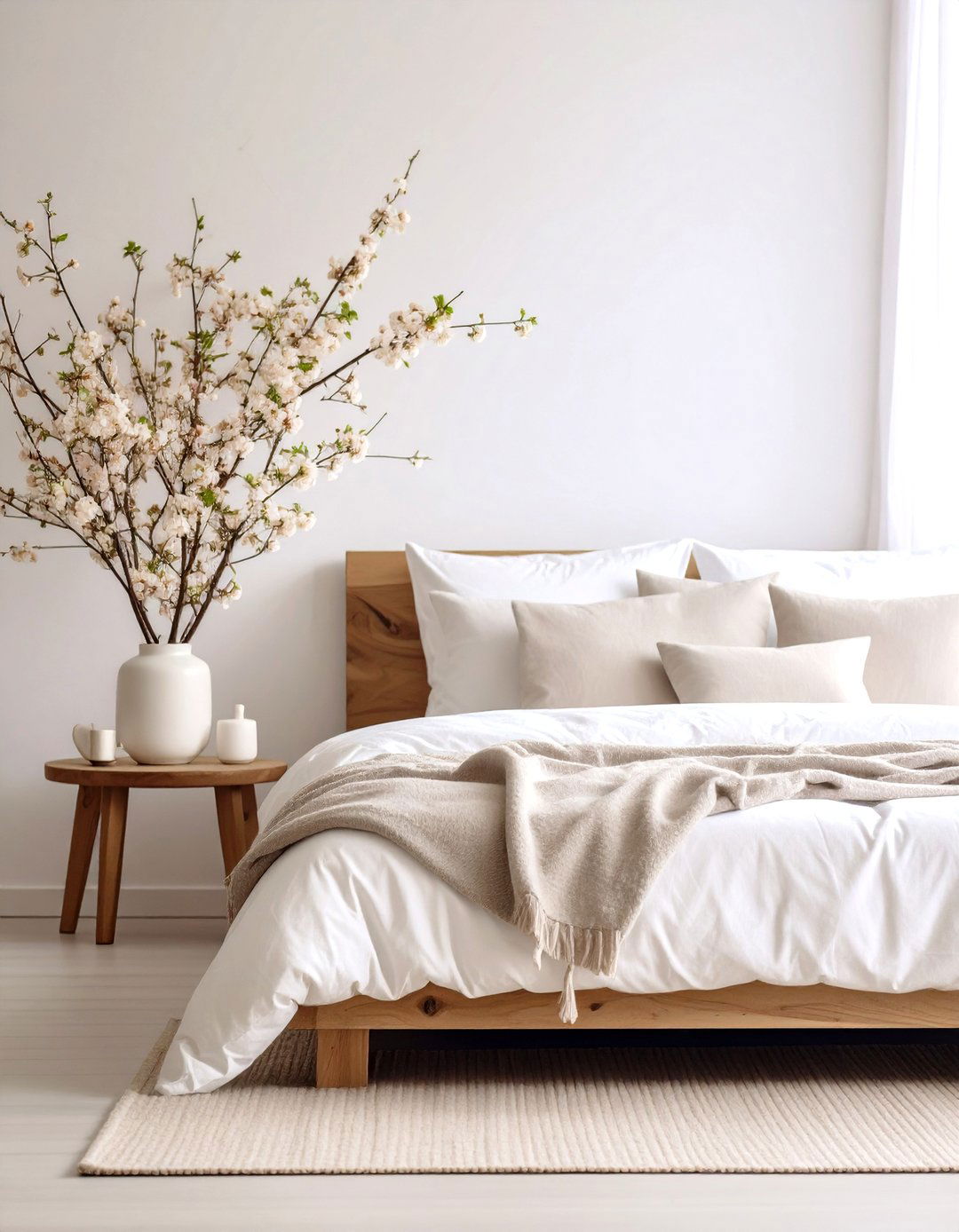
Embrace the zen principle of impermanence by rotating seasonal natural decorations that reflect the changing cycles of nature throughout the year. Display fresh branches with spring blossoms, summer wildflowers, autumn leaves, or winter evergreen arrangements in simple vases that complement the bedroom's natural palette. Change textiles seasonally with lighter linens for summer and warmer wool throws for winter while maintaining the zen color scheme. This practice connects the indoor environment with natural rhythms and prevents the space from becoming static or stagnant. Seasonal changes support mindfulness of time's passage and appreciation for nature's beauty while maintaining the zen bedroom's essential simplicity and connection to the natural world.
Conclusion:
Creating a zen bedroom requires thoughtful integration of minimalist design principles, natural materials, and mindful living practices that transform your space into a true sanctuary. By implementing these twenty ideas—from establishing clutter-free organization to incorporating natural elements and seasonal awareness—you can design a bedroom that supports both physical rest and spiritual renewal. The key lies in maintaining simplicity while choosing quality elements that enhance rather than overwhelm the peaceful atmosphere. Your zen bedroom becomes more than just a sleeping space; it becomes a retreat that nurtures well-being, promotes mindfulness, and provides the restorative environment essential for a balanced, harmonious life.



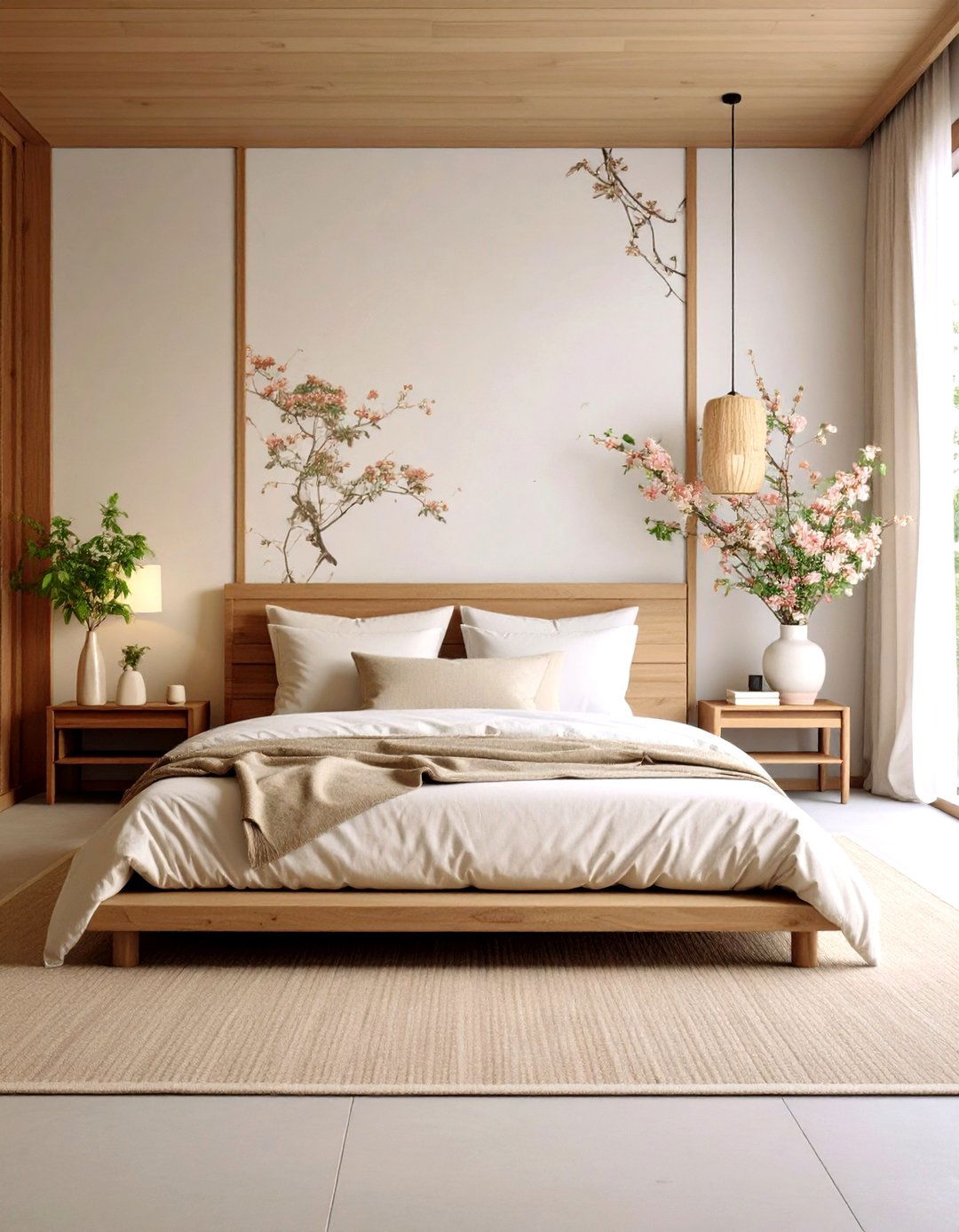
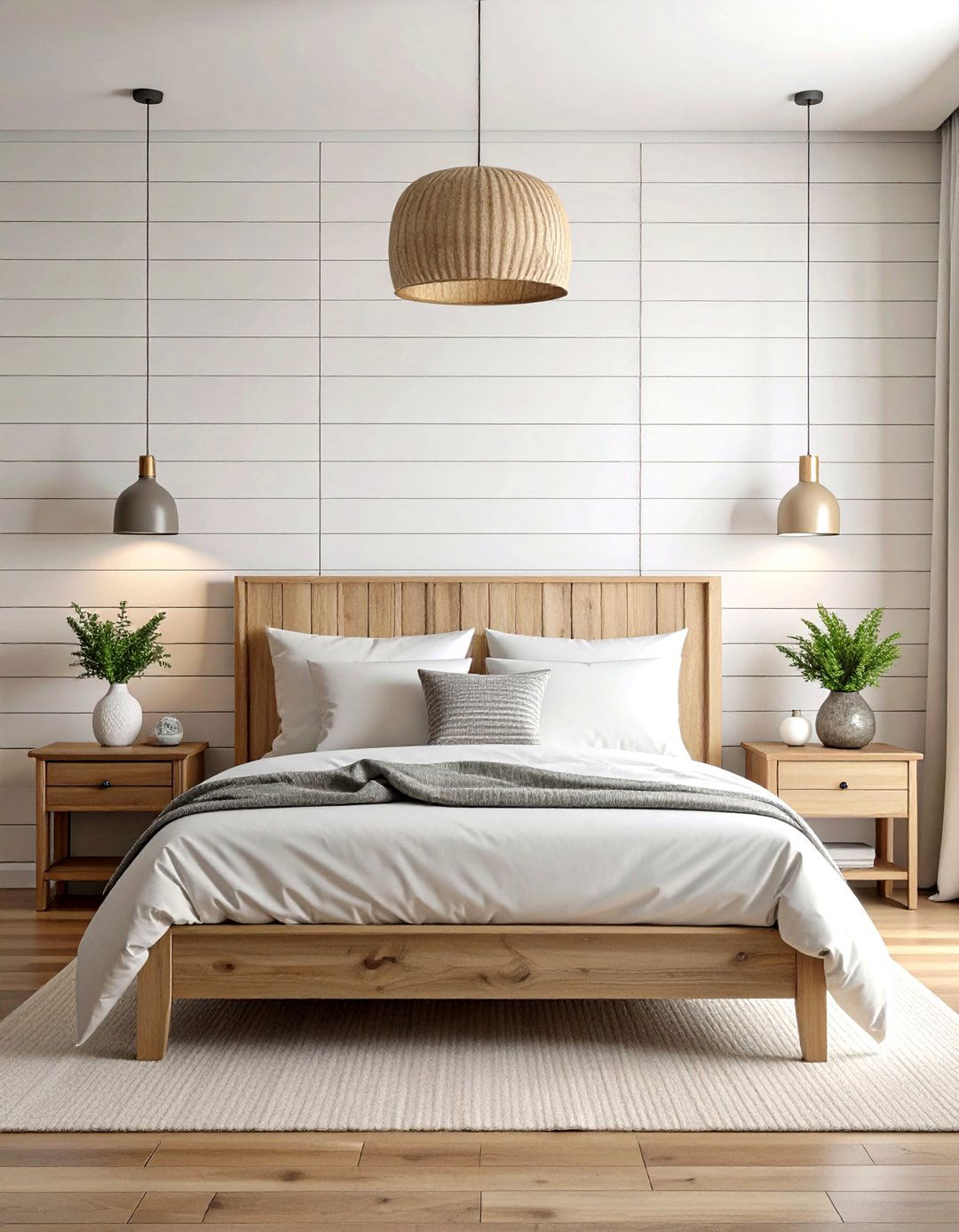
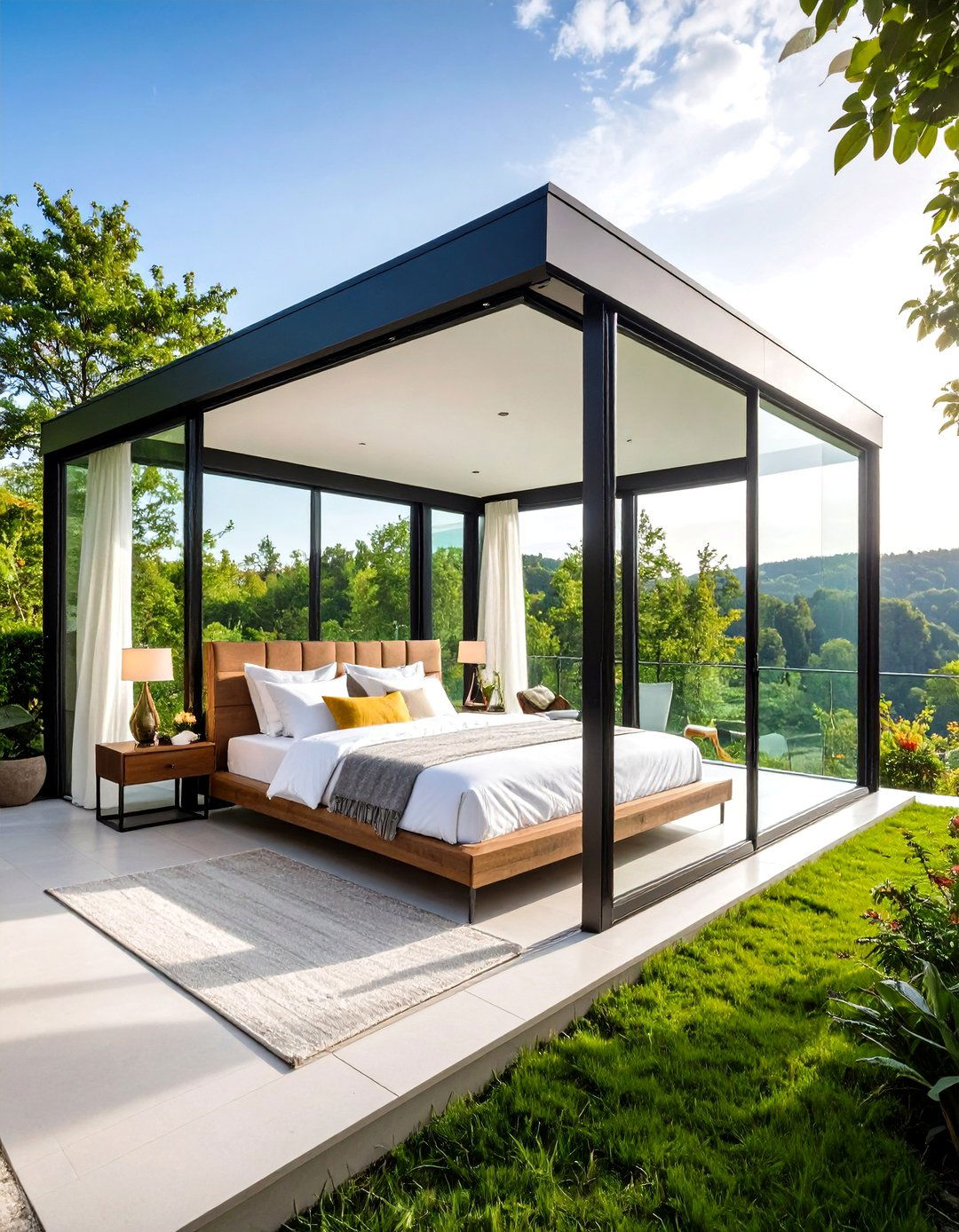
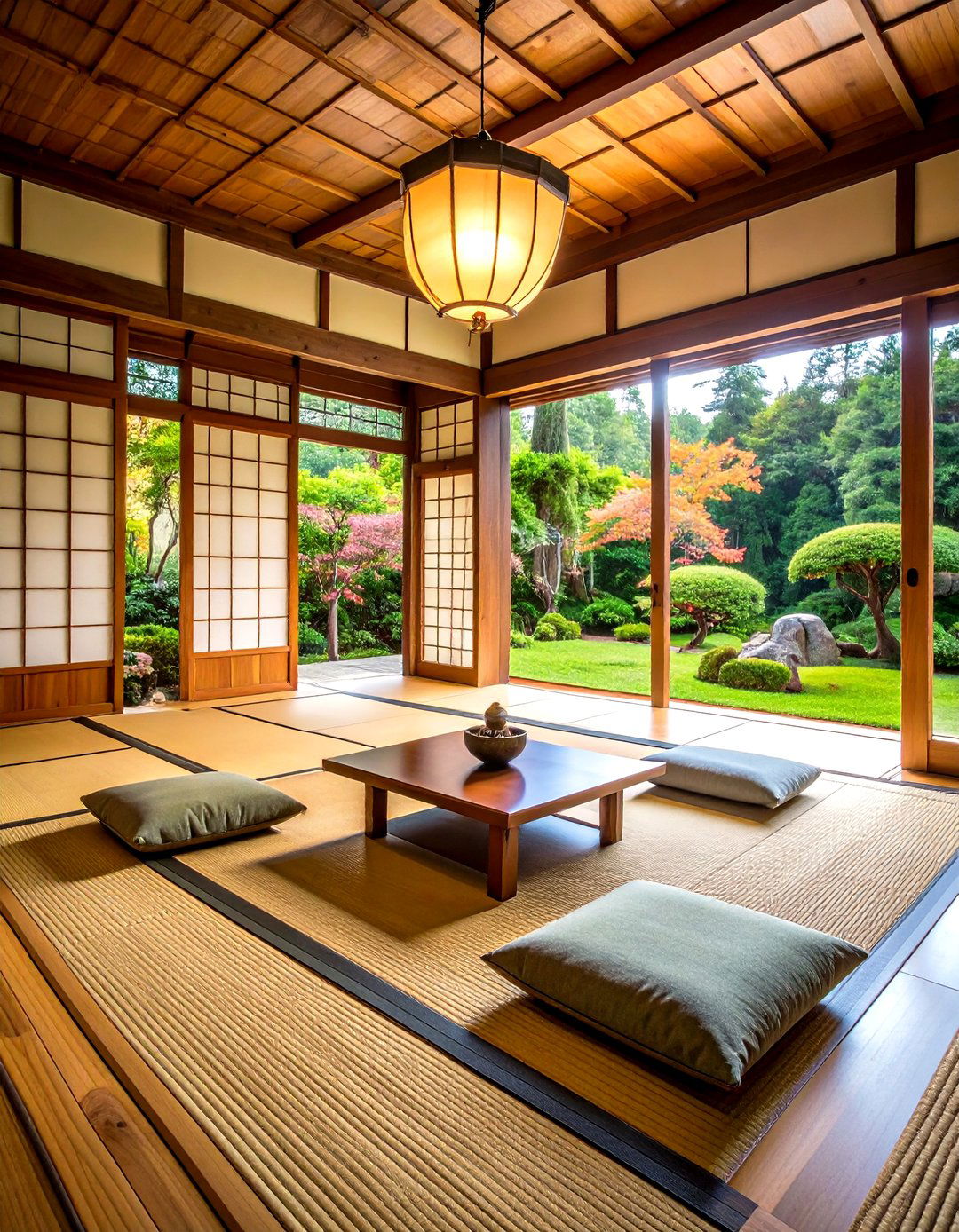
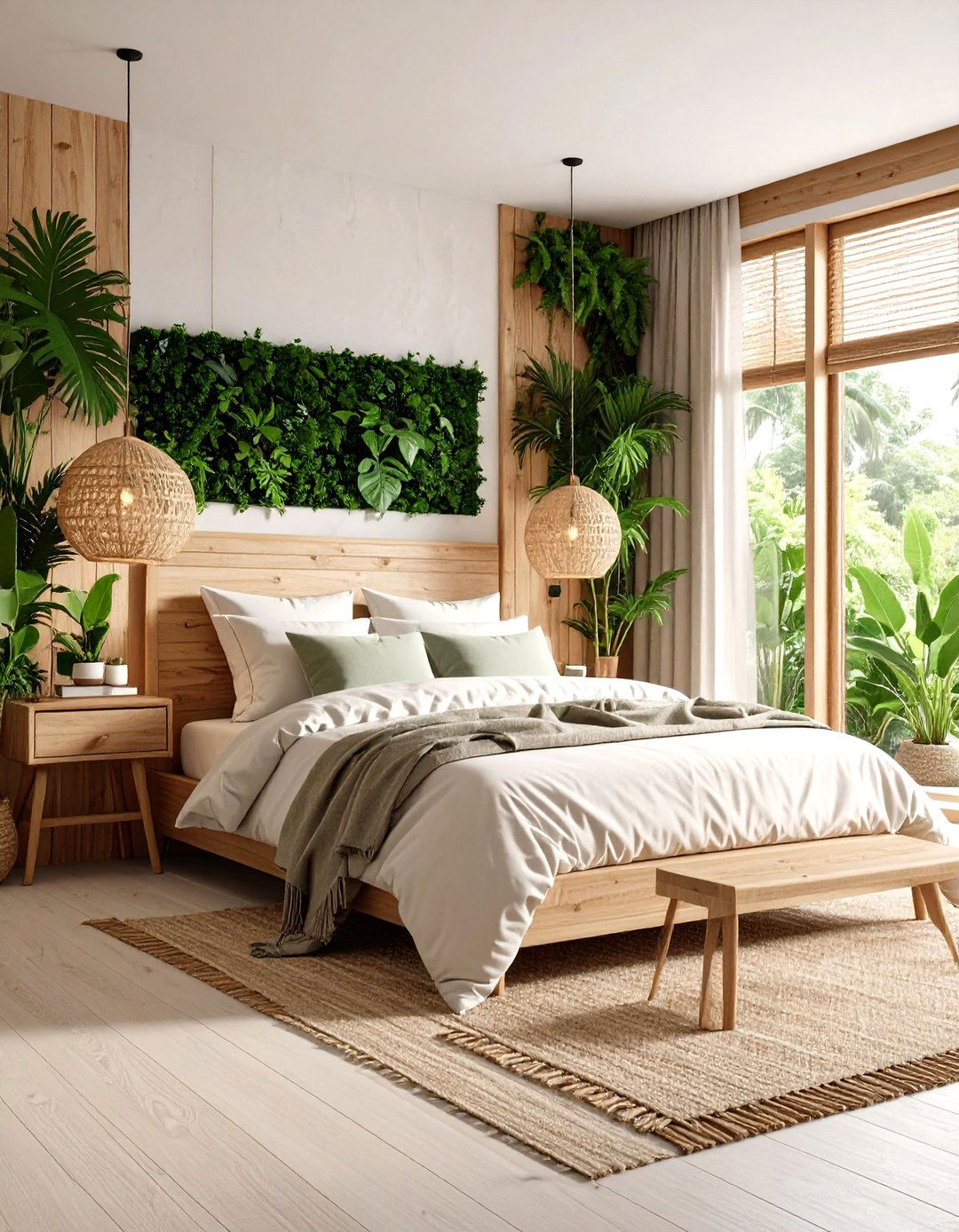




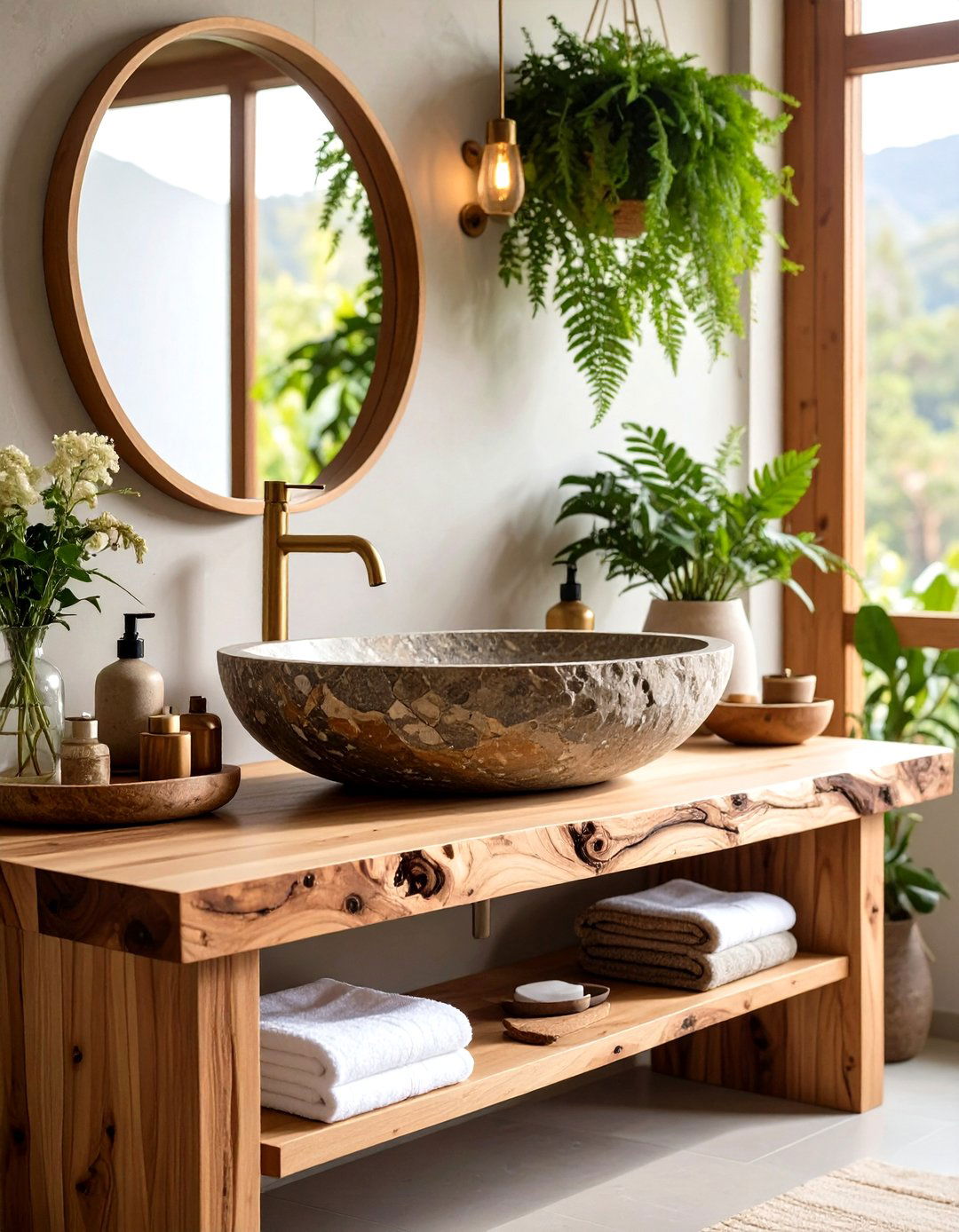
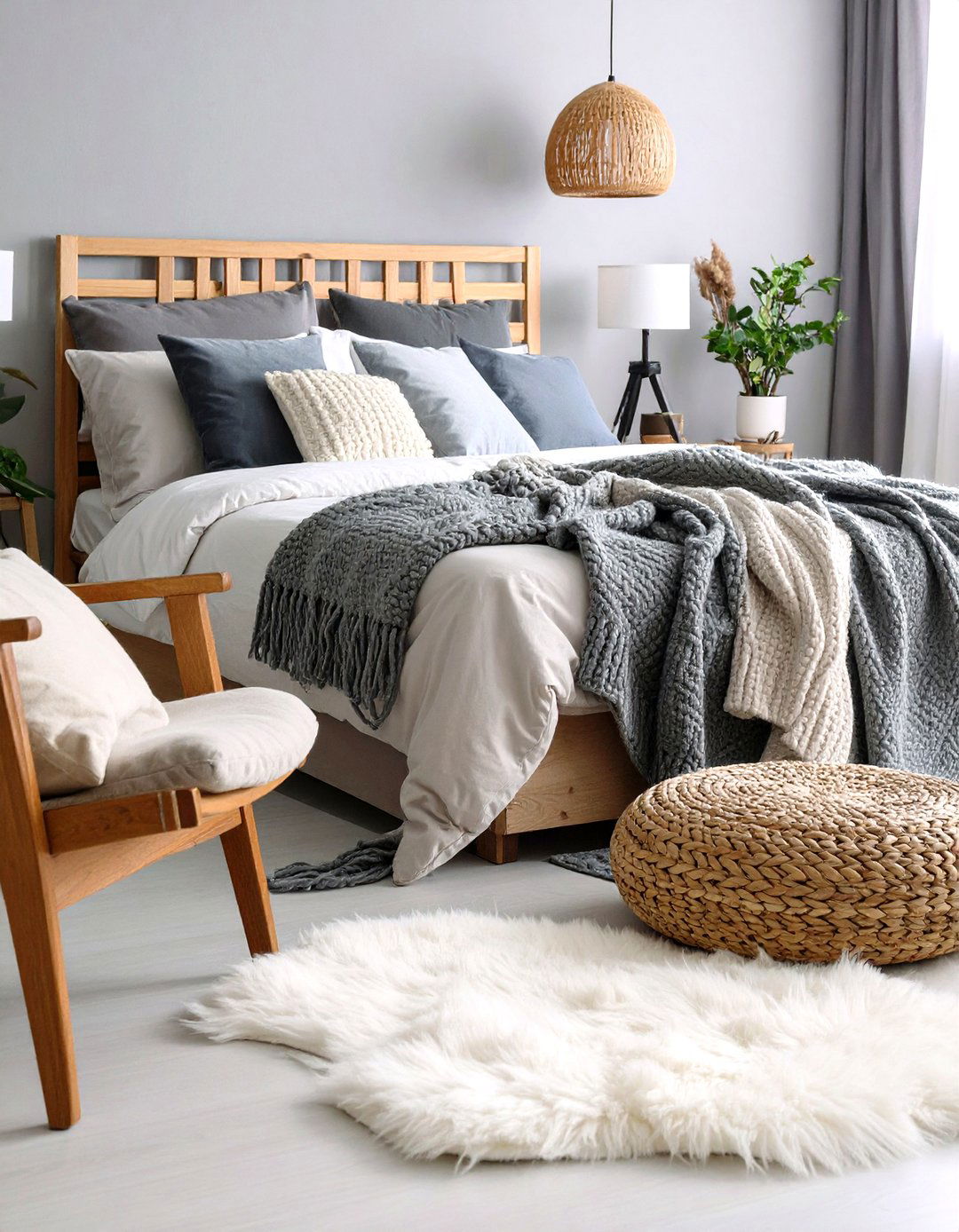

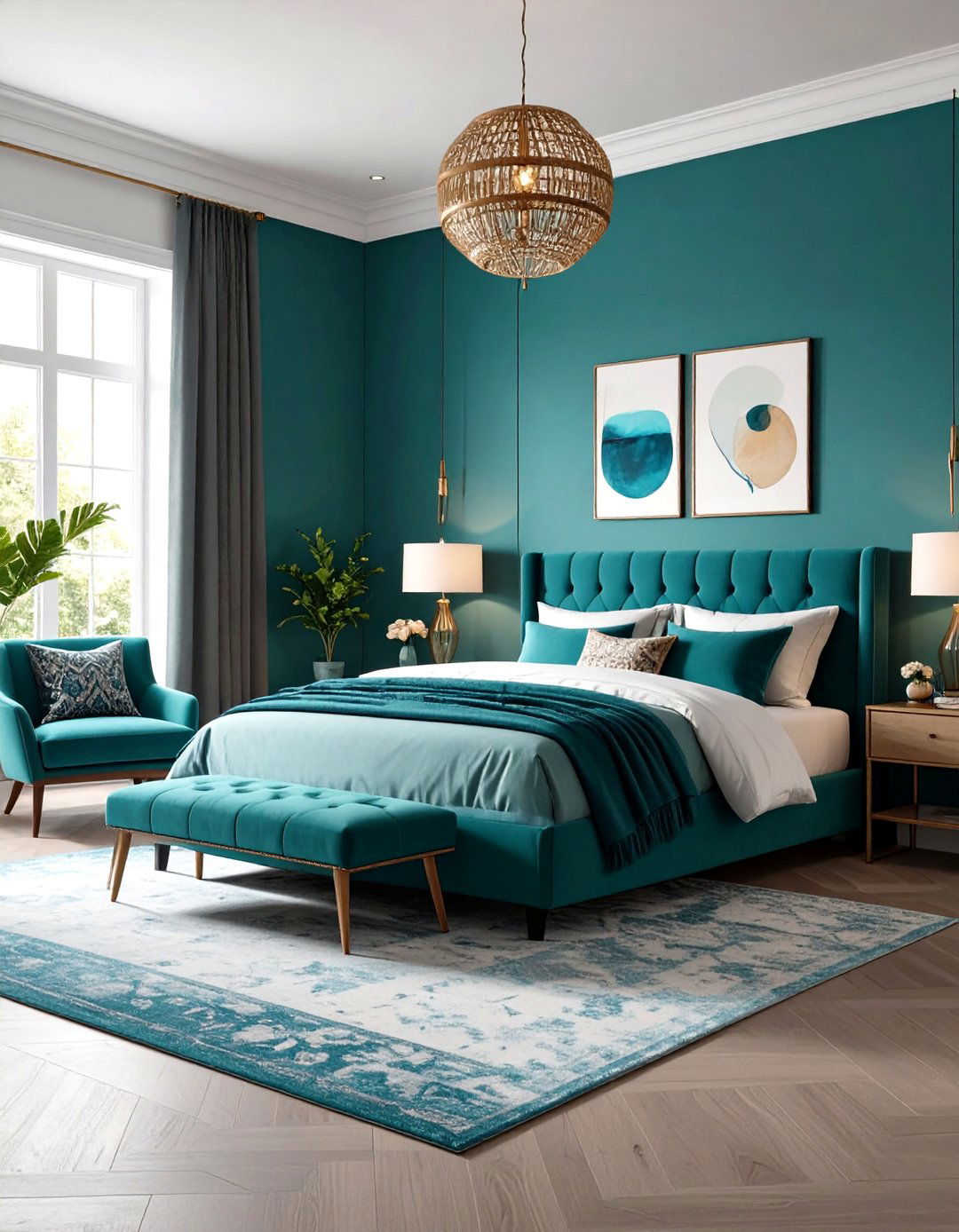
Leave a Reply